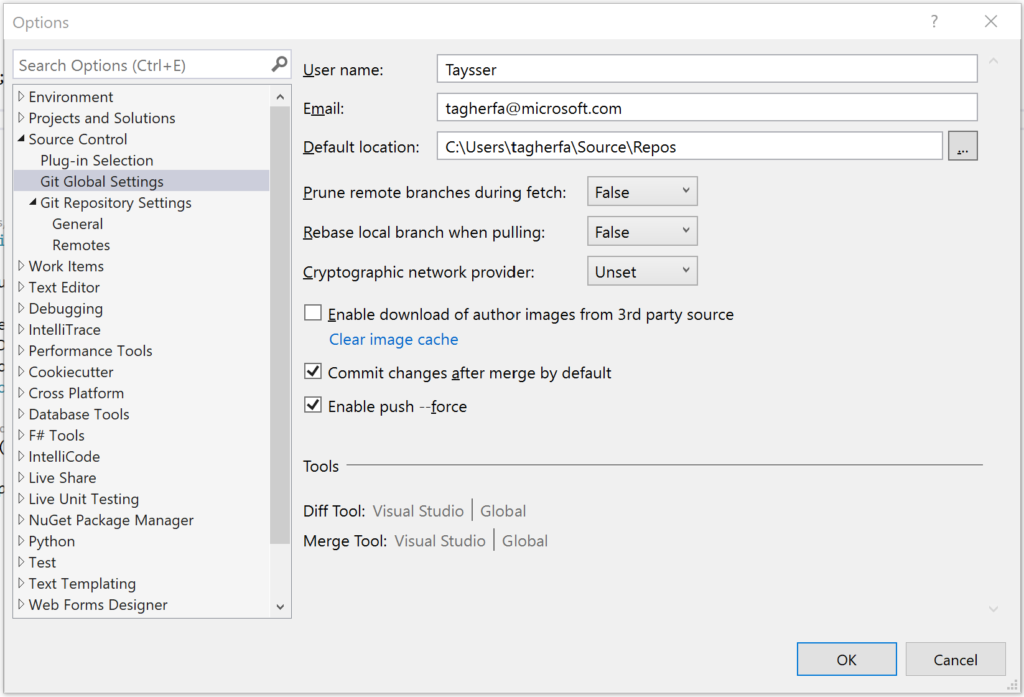

Because a lazy person will find an easy way to do it.



You can use “git remote show origin” to see what’s on the server.Choose a lazy person to do a hard job. You need to do “git remote prune origin” to remove your local copies of remote branches (just the refs, not the commits) that are no longer on the remote server. So I tell Bob to do a fetch first, then he’ll see my new branch. Those refs include new branches on the server. When you do “git fetch origin”, all new commits and refs are downloaded from the server. They are listing what you already have in your local repo. I might say “hey Bob, I just pushed up a new branch, check it out” and Bob opens the solution and goes to remotes/origin and doesn’t see the new branch. It’s a common misunderstanding here at work – the other devs think when they look at remotes/origin in VS that VS connects to the remote server and shows a list of branches on the server. You can even do commits, but being in a detached HEAD, you’ll lose those changes if you don’t create a branch or tag before doing a checkout to another branch/ref. This allows you to examine/compile/run the code. Remote branches are still references (pointers) to a commit, so you can do the checkout but will be in a detached HEAD. After you do a fetch, the commits are in your local repo. Technically, you can checkout remote branches. *Heaven Sent was one of the best Doctor Who episodes in a LONG time. If I have any of the above terminology wrong, please let me know!! In any case, when I’m trying to learn something new, it is helpful for me to see what is going on step-by-step as much as possible. Track remote branch and Checkout branch – of course). For example, I’d assume the checkout command keeps the defaults (e.g. I believe the Checkout command on the context menu for a remote branch will perform the above steps, but I’m not sure if there are any differences. Because the default is the Checkout branch option checked, the `for-review` is bolded. You could also do ` private string I’m sure the is far worse.Ĭhecking the Create Branch button creates the local `for review` branch. Note how Visual Studio auto-populates the name of the local branch as `for-review` You could change the local branch name. The Create Branch window section will appear. We’re going to manually create the local branch first, then checkout, to see the process.įirst, right click on the remote branch, and select New Local Branch From on the context menu, just as if you were creating any other branch. Note just like 13* we’re going the long way around, meaning we’re not going to choose the “checkout” command in the context menu. Suppose you want to checkout the `for-review` branch to do work. I guess if you could, you’d be working directly on the server instead of your local machine, which wouldn’t make too much sense, and probably wouldn’t be possible since a bare git repo (aka the git server you’re checking out from) doesn’t have a concept of a working directory. You cannot check out these remote branches directly. I guess even if you checked out a “remote tracking branch” without the tracking flag (or without the checkbox checked), you’d still have the original “remote tracking branch” alongside the local non-tracked branch. Can you have a remote branch that isn’t a remote tracking branch? I guess not. I believe these are also referred to as “remote branches” but the “tracking” is implied. The branches listed under remotes/origin are called “remote tracking branches”. That’s why you see a local checked-out (bolded) master and a remotes/origin master branch.įor the other branches under remotes/origin, Git doesn’t automatically pull these down. By default, Git pulls down the main tracking branch (e.g. Suppose you’ve cloned a project from a GitHub repo that contains multiple branches.


 0 kommentar(er)
0 kommentar(er)
